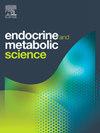Update on thyroid nodules: Characteristics and clinical management
Q3 Medicine
引用次数: 0
Abstract
Thyroid nodules (TNs) represent a highly widespread condition, usually destined to a positive outcome. Nevertheless, making a correct diagnosis is crucially important to ensure an appropriate and tailored strategy of follow up or treatment. Several different techniques allow to gradually characterize TNs by performing cytological and compositional analysis. In addition, collecting data of common risk factors together with recognized features - including microcalcifications, uneven margins, taller-than-wide form - may contribute to indicate a suspected malignancy. By combining all these information and proceeding step by step in the patients' investigation to achieve a diagnosis, physicians can optimize the diagnostic process thus differentiating the small percentage of patients that need surgical intervention, without impacting on those patients with benign TNs. This may result helpful for improving the management of patients with TNs. Instead, in cases of benign TNs that no need neither surgical nor pharmacological treatments, dietary supplementations based on micronutrients involved in thyroid physiology, as iodine or myo-Inositol (myo-Ins), represent a useful tool. Even though evidence from literature sustains a correlation between iodine deficiency and TN occurrence, there are very few studies regarding a possible correlation between myo-Ins deficiency and presence of TNs. Therefore, further investigations aimed to correlate myo-Ins levels with the cytological severity of TNs may add new insights on this topic and improve the diagnostic process that aims to tailored therapies for these patients.
甲状腺结节的最新进展:特征和临床管理
甲状腺结节(TNs)是一种非常普遍的疾病,通常注定是阳性的结果。然而,做出正确的诊断对于确保适当和量身定制的随访或治疗策略至关重要。几种不同的技术允许通过执行细胞学和成分分析逐渐表征TNs。此外,收集常见危险因素的数据以及已知的特征-包括微钙化,边缘不均匀,高过宽的形式-可能有助于提示可疑的恶性肿瘤。通过综合所有这些信息,在患者的调查中逐步进行诊断,医生可以优化诊断过程,从而区分出一小部分需要手术治疗的患者,而不影响那些良性TNs患者。这可能有助于改善tnn患者的管理。相反,在良性TNs不需要手术或药物治疗的情况下,基于参与甲状腺生理的微量营养素的膳食补充,如碘或肌醇(myo-Ins),是一个有用的工具。尽管文献证据支持碘缺乏与TN发生之间的相关性,但很少有研究表明myo-Ins缺乏与TN存在之间可能存在相关性。因此,进一步的研究旨在将myo-Ins水平与TNs的细胞学严重程度联系起来,可能会为这一主题提供新的见解,并改善旨在为这些患者量身定制治疗的诊断过程。
本文章由计算机程序翻译,如有差异,请以英文原文为准。
求助全文
约1分钟内获得全文
求助全文
来源期刊

Endocrine and Metabolic Science
Medicine-Endocrinology, Diabetes and Metabolism
CiteScore
2.80
自引率
0.00%
发文量
4
审稿时长
84 days
 求助内容:
求助内容: 应助结果提醒方式:
应助结果提醒方式:


